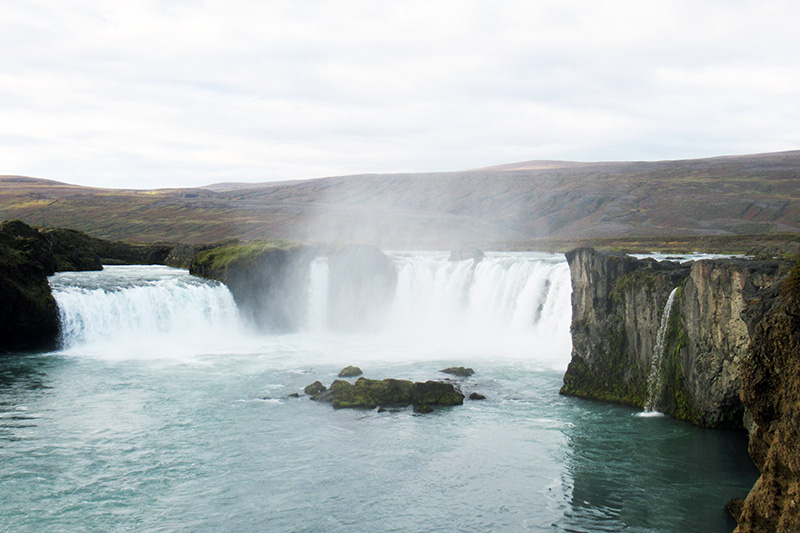3 September: Iceland, the name and the mental imagery that goes with it, evokes visions of icesheets and glaciers and, to a lesser extent, the streams and rivers fed by their meltwater (which in N. America, where I’ve seen it, is always turquoise colored but here is sandy in what I’ve so far seen). I’d have to go to the Highlands—and that would require hiring someone to take me—to see ice in its glory here, although the melting edge of the sheet can be seen behind the escarpment I mentioned yesterday. As this drive is showing me, Iceland is as much water-land as anything and I love what I see. Streams approaching precipices have more ways to get down than one might initially think. I’ve seen waterfalls, cascades, slides, two- and three-stepped falls and the same arrangement combining falls and cascades, and to add more to the mix it matters what the last shape and size rock it is that the roiling water surmounts before ending its vertical flow. One today was large and shaped rather like a hamburger bun and sat at the transition from mountain stream to one of the plains; some of the water flowed directly past its sides and other flowed across the top and then sheeted out and quickly down in an arc with the shape of a bubbly, showery curtain—the source of all this being visible as the stream headed downhill to meet its fate at the bun. Both sides of the opening that fell into a pool where distinguished by very large monolithic rocks standing at attention in honor of what the water was accomplishing.
I had to go twice to find a somewhat less touristed time at a place I wanted to see but I managed to walk up to and along Fjaðrárgljúfur (I don’t think I’ll do that again; there’s not much point in straining to spell correctly names I can’t begin to pronounce; I’ll remember the place by the description), a hundred meter deep cleft in mountainside rock that runs a couple of kilometers. It’s black rock, and green moss and grass, and stream rolling through; not glacial but just shallow depression that water and erosion and temperature changes had their way with over the last few thousand years since the ice cap receded. An evocative sight; it reminds that the area around it that’s not cut out and is still green-covered and smooth is also black rock under the surface.

Why do these long natural world projects always turn out beautiful forms—shapes, sizes, and designs that humans would be seriously challenged to match.
Since this morning when I sat for a time beside the curious waterfall I described above as “bun-like” at its end, I’ve thought about beauty and how, for me, it is most often found in Nature—sometimes in music, occasionally in art, but mostly Nature—and more to the point how we’re drawn to it and what it does to and for us. It is ironic for me to watch all these people working so hard to visit special places and then spending so little time with them before or after their pictures (and why do so many of these pictures have to have a person as foreground?) Dramatic and popular sights seem to draw them but the beauty, which I think takes some time to absorb, almost seems overlooked. When I began to reduce the length of my hikes owing to aging legs, I didn’t realize for a while what a gift was hidden in that. The slower I’ve gone and the shorter the distances, and the more time spent attending to any one place, the richer it has been. Beauty apprehended and honored for its independent being is among those few experiences that make us better for having allowed them to soak into us.
Photos by the Author


